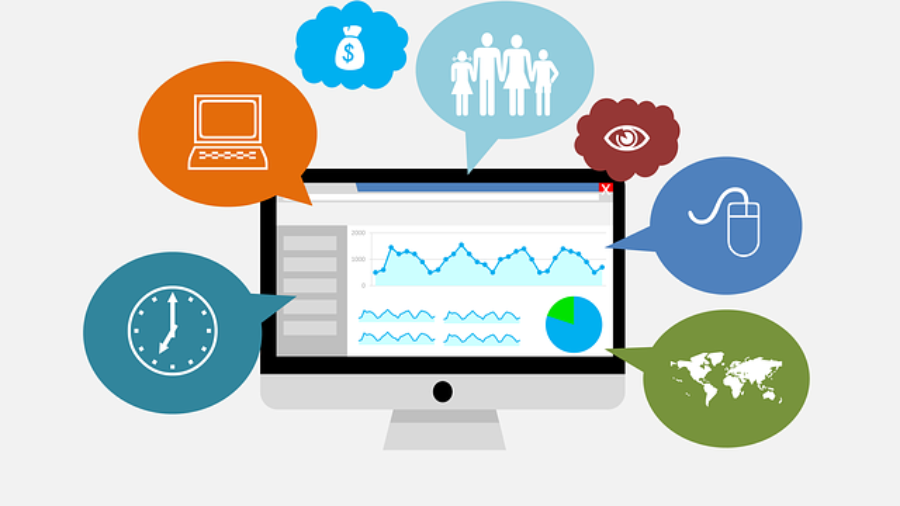Digital marketing relies on great content! But it’s not enough to create content that gets likes on TikTok or sees thousands of blog impressions.
Great content needs to be relevant, targeted, creative, persuasive, valuable, and informative – and that’s a challenge for many marketers that are time and resource poor even with the help of AI copywriting tools.
So how can you create and share content that makes an impact not only with your customers, but to your KPIs and bottom line?
In this blog, we explore the nuts and bolts of content marketing to help you craft content that serves a purpose and performs by covering:
- What is content marketing?
- What is the purpose of content marketing?
- How can you develop a content plan or strategy?
- How can you apply funnel techniques to your content?
- What is a buyer persona and how can you use it to craft content?
- 10 expert tips for making great content
- How can you effectively distribute your content?
What is content marketing?
Content marketing is the creation and sharing of content in different formats such as videos, blogs, emails, and social media posts, to build interest in a brand, product, or service.
It is becoming increasingly important for marketers to understand content marketing and to know how to use it effectively. The rise of ad blockers, algorithms, private social media (where users can connect and share information in a private, invitation-only group such as WhatsApp or Discord), and many other factors is increasingly limiting our ability to reach consumers.
However, content marketing can cut through these barriers, because it is centered on creating written and visual assets that have a genuine and intrinsic value to people.
What is the purpose of content marketing?
The purpose of content marketing is to drive inbound customer engagement and organic searches (using search engine optimization) from a defined audience. It aims to influence behavior at every touchpoint with data-driven storytelling aligned to business objectives
Content is strategically created or curated, and distributed through key digital channels including owned media, paid media, and earned media to attract customers to your website or custom landing pages.
This engagement can then be nurtured to convert prospects into valuable customers.
What is inbound marketing?
But what exactly is inbound marketing? Well, it’s a strategy where brands use content marketing to attract customers towards them.
The key driver of inbound marketing is consumer intent as potential customers actively seek out a brand’s content. As a result, consumers are more engaged and open to taking action than if the brand were to communicate with them when they are not actively interested or just communicate sales messages.
What is outbound marketing?
Outbound marketing, on the other hand, is when the brand pushes messages out to as many people as it can within a target audience that’s believed to be a good match for its product or service. For example, a brand might use a social media platform such as LinkedIn to target people in a certain profession or role.
Of course, consumers might not be interested in the product at that particular time! So outbound advertising is generally less effective than inbound marketing at driving action.
How can you develop a content marketing plan or strategy?
Content marketing drives valuable search traffic and social engagement. These in turn can increase the number of valuable actions taken by your audience.
To create a successful content-driven campaign, you first need a content plan! This helps to set out the objectives and scope of your project and keep everything on track while providing a roadmap outlining the different aspects of your campaign.
The content strategy can be referred to when queries arise and adapted to suit the changing needs of the campaign and audience. It also ensures content is developed for purpose by:
- Defining objectives, KPIs, budgets, and audience personas
- Capturing the brand or campaign story
- Detailing production pieces, such as formats and timings
- Outlining distribution channels
- Measuring the performance of content
When you’re developing a content plan or strategy it’s worth considering the following:
- Scope of production: Identify the type and quantity of assets and formats you plan to deliver.
- Timeline: When will you deliver each part of the strategy? Plan your timeline carefully and ensure you’ve allowed enough time for each stage of production.
- Budget and production resources: What is required in terms of money and people to deliver your content efficiently?
- Upstream dependencies: What has to happen for the strategy to progress? Try to identify any potential issues in advance and put a solution or alternative plan into place.
- Downstream dependencies: What must the strategy deliver for something else to progress?
- Risks: What could happen to derail the plan? Factor in some contingency time for unexpected delays or complications.
It takes time to plan and execute a content marketing strategy effectively because there are many moving parts. So you need to be flexible and ensure your strategy is agile to adapt in response to changing business objectives, KPIs, and performance.
” Only 29% of marketers whose organizations have a documented content strategy say it’s extremely or very effective “– Content Marketing Institute
How can you apply funnel techniques for your content?
You can use the conversion funnel as a guide when planning your content marketing strategy. This enables you to map your content to key decision points in the consumer journey and address their needs and provide solutions.
The conversion funnel helps you understand the consumer journey by tracking the different steps a typical consumer would complete on the way to taking a valuable action, such as a purchase, sign up, or contact request.
Content marketers should use funnel insights and knowledge to drive more valuable customer engagement and create data capture content to drive conversions.
Let’s break down each stage of the funnel along with the relevant content types for each one.
Top of the Funnel (TOFU): Awareness
The aim of TOFU content is to attract attention, educate, and generate interest to an audience seeking solutions or information.
Content types for this stage are:
- SEO-optimized blog posts
- Infographics
- Social media content
- Podcasts / YouTube videos
- Interactive quizzes
- Webinars (intro-level)
Middle of the Funnel (MOFU): Consideration
At this stage of the funnel, you should create content to build trust, differentiate your offering, and nurture consumers. The audience for MOFU are aware of solutions and comparing options.
Content types for this stage are:
- Case studies
- Whitepapers/e-books
- Product comparison guides
- Email drip campaigns or automated trigger workflows
- Mid-funnel webinars
- Checklists, toolkits and templates
Bottom of the Funnel (BOFU): Decision-making
BOFU content is focused on converting, closing, and onboarding to an audience that’s ready to choose a solution and is evaluating a purchase.
Content types for this stage are:
- Demos or free trials
- Testimonials and reviews
- Sales decks
- Personalized emails
- Onboarding videos
Retention (after purchase)
It’s important not to forget about a customer after they make a purchase or conversion. You won’t survive as a brand if you only focus on converting new customers, it’s just as important to nurture existing ones to build customer loyalty and grow!
Types of content to use at this stage are:
- How-to guides and tutorials
- Community or social groups (such as Facebook or Reddit)
- Customer or client success stories
- Customer loyalty programs
- Product update newsletters
- User-generated content (UGC)
It might also be worth creating re-engagement content such as an email campaign or special offer for people who’ve dropped out at different stages of the consumer journey to entice them back.
What is a buyer persona and how can you use it to craft content?
One tactic that content marketers can use to develop a successful content strategy is to develop buyer personas.
A buyer persona is a snapshot of your ideal customer. You need to know as much as you can about the behaviors and attitudes of your ideal customer, in relation to the objectives you have set for your content strategy.
The benefits of creating personas are:
- Improved targeting: Personas help you to adjust and focus your content. This helps to ensure that it is strategically positioned to target consumers who are likely to be interested in it and convey your message to the right audience at the right time. They also enable you to perform market research, targeted advertising, usability testing, and keyword research more efficiently.
- Decide on the best content format: Personas give you the information and perspective you need in order to make objective decisions about how to craft your brand messages through the most consumed and widely accepted formats. These include short-form videos, blogs, webinars, or social media posts. This helps you to create compelling content that meets each persona’s needs.
- Aid discovery: Personas help you discover insights into your audience’s behavior. Where are they having conversations? What topics are they interested in? If you distribute tailored content to where your audience is active, you can leverage their online behaviors to the maximum effect.
So, when creating personas, it’s important to think about:
- Objectives: What are your ideal customers looking to achieve by interacting with your business? How many competitors will they consider? What information is pertinent to their decision?
- Location: Where are your personas from? Where are they based?
- Demographics: What age group are they in? What is their marital status?
- Job or role: What’s their economic position or job role? What industry do they work in?
- Platforms: Which online platforms do they use? Where are the conversations happening with your target audience?
- Devices: What devices do your personas use to access the internet? What kind of connection do they have?
- Purchase behaviors: What steps do they take when considering a purchase?
- Interests: What topics are they interested in? What issues are they trying to solve? How do these issues impact their lives and how can your brand help?
The best way to gather information and data for your personas is to look at the information you already have.
Analyze your Google Analytics data to find out about the top-performing channels, and look at social media analytics to see what content resonates along with social listening. Also use audience listening to monitor brand mentions and conversations across digital channels.
You can even use ChatGPT to help create buyer personas by using the right prompts and insights. Check out this walkthrough with DMI expert Will Francis to find out how.
10 expert tips for making great content
Once you’re armed with a content marketing strategy and have an in-depth understanding of your audience, it’s time to craft some great content!
So let’s look at 10 expert tips to help you create content that engages and converts your target audience.
1) Create content pillars or themes
When you’re creating content for a target audience, it should be focused on key topics or themes that cohort (target audience) is interested in. By developing discrete and focused content pillars, you can link content together to provide information at every stage of the funnel and become an authority in that area.
For example, if you produce plant-based milk like Oatly, then your content pillars could be nutrition and wellness, plant-based living and sustainability, and plant-based recipes.
2) Tailor content to each channel
Each channel requires attention to detail when it comes to content. For example, what you would send in an email wouldn’t work as a paid ad. Consumers can tell when content reads strangely or comes across as inauthentic (the cut-and-paste method), so you need to tailor content to each platform.
That doesn’t mean starting from scratch each time, however. It just means tweaking content so it suits the channel. The same goes for each social media network – what works on a YouTube channel won’t necessarily translate on LinkedIn.
3) Update old content
Marketers often find that, over time, top-performing content sees a drop in performance. That doesn’t mean that the topic isn’t of interest anymore. It could just be due to content seeming dated (statistics are particularly evident in this case) or it being harder to find as it’s dropped down the search rankings.
When this happens, don’t panic. You don’t have to always create new content. Reinvigorate existing content so it’s more up to date or relevant to your audience. Neil Patel research found that updating content can have as much as a 106% increase in traffic.
4) Conduct original research
As marketers need to compete with AI-generated search results such as Google’s AI Overviews, it’s getting harder to feature on the first page of the SERP. Original research can help set your content apart by bringing something unique and valuable to the table for your audience.
By including original research such as whitepaper key findings or survey or poll results, you can feed into Google’s E-E-A-T algorithm (which is used to assess the quality of content and play a role in where it ranks). It’s also worth including quotes from subject matter experts that your company works with to build credibility and authority.
5) Write for humans and search engines
When you create content, think about the person reading it. Regardless of whether you’re a B2B or B2C business, you should create content that excites and engages. So, aim to use clear and conversational language that avoids jargon or complicated terminology, unless your audience expects it.
SEO also plays a part here to get your content found, so consider using intent-driven keywords, headers, meta tags, and schema where appropriate. Also prioritize readability by using short paragraphs, bullet points, and strong hierarchical headlines.
For many customers – particularly the younger generations – platforms such as YouTube and TikTok are becoming search engines. So, when posting content, think about search intent and what people are looking for.
6) Lock down your brand tone and voice
One of the most effective ways to stand out as a brand and from competitors is to nail a brand tone and voice. A unique brand voice can help people recognize your content when it comes up in their feed or into their inbox.
Take drinks brand Innocent, which is well known for using humor and an informal tone in its content across platforms. By keeping that tone consistent, the brand is instantly recognizable to consumers – alongside its simple logo and use of color.
 Innocent’s IG post
Innocent’s IG post
7) Tell a story
Try to make your content tell a story – whether that’s about your brand (values, ethos, and so on), your customers (what they like or who they are), or your products and services. You can do this by using narratives or including real examples, or mini-case studies, to make content memorable.
Along with the tone and voice, humanize your brand story so people know what it stands for. Tap into what makes a brand unique so that you can create content that stands out, and try to inject some personality or empathy.
8) Use visuals
Visuals are a big part of content. That could be an impactful video, a powerful image, or an ad carousel to reveal a story or message. Try to incorporate visuals alongside content, so it adds value. Don’t just include a visual for the sake of it!
Visuals can also be a great way to break up text, particularly in long-content such as blog articles or ebooks. Always try to stay on brand when it comes to your visuals or align the visual you use with the content and message.
9) Leverage AI
Use AI to help you brainstorm and develop content, but remember that anything you produce with AI needs to be proofread and checked before you share it.
Tools like ChatGPT, Jasper, or Copilot are great for content ideation, optimization, and outlines. You can also use them to edit or provide suggestions on how to improve your content and provide alternative perspectives if you’re looking to create content for different personas.
Here’s a walkthrough on how to use Google NotebookLM, which you can ask for a given task and the information is not shared with the greater AI-verse. ▶
Join for FREE to access this video.
10) Repurpose content
Don’t forget that you can always repurpose content that works with your audience. With so little time and so much content to produce, it’s worth looking at other ways to repackage content that performs.
For example, you can turn a top-performing blog into:
- LinkedIn carousel
- Email workflow or campaign
- Short video script
- Infographic


